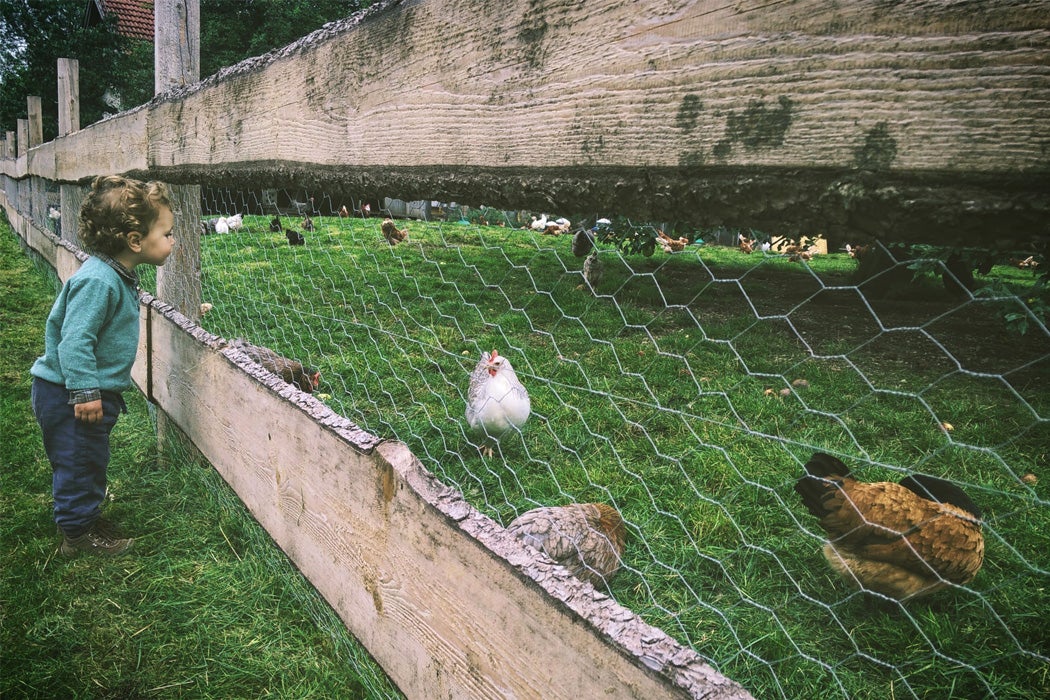Welcome to JSTOR Daily’s Planet-Conscious Weekly Summer Travel Series! From electric cruise ships to sustainable seafood, we will investigate better and greener ways to travel, eat, and interact with the world.
From farm tours to bucolic bed-and-breakfasts, petting zoos to pick-your-own peaches, agritourism is booming. The USDA estimated that between 2000 and 2001, over 82 million Americans visited a farm for recreation and leisure—to gather strawberries, taste apple cider, ride horses, and learn how to grow produce. There is no universal description of agritourism, but the University of California’s Small Farm Center defines it as “the act of visiting a working farm or any agricultural, horticultural, or agribusiness operation for the purpose of enjoyment, education, or active involvement in the activities of the farm or operation.”
Agritourism may sound like a trendy fad, but it’s actually over a century old. In the late nineteenth century, Western North Carolina’s pastoral landscapes began to draw visitors to the region. As tourists flocked to admire the quaint agrarian communities, the tourism industry began to develop. North Carolina’s tourism department distributed pamphlets and travel books advertising vistas of small mountain farms where visitors could view, from a distance, families cultivating their property as they had for centuries. Visitors to Asheville, North Carolina, were given maps of the area and encouraged to make day trips to the historic pastureland. Soon other agricultural areas followed the trend, boasting their picturesque farms and charming villages to the visitors.
The movement became known as agricultural tourism, or agritourism, and the federal government helped promote these early agritourism efforts. Later, when the agricultural economy grew stagnant, farmers began to actively invite tourists onto their farms to supplement their incomes. The visitors’ interest in a simpler way of life also fueled the market for various handicraft goods like quilts, baskets, and woodcarvings produced on farms, bringing extra income for the farmers.
A century later, agritourism is growing, driven by both demand and supply. On the supply side, economic pressures have pushed farmers and ranchers to diversify their income. Studies found that agritourism can be especially important for small family farms, many of which struggle to keep their agrarian heritage. In areas where farms face pressure from large-scale commercial operations or lose land to urban development, agritourism helps bring extra cash. According to the 2007 Census of Agriculture, 23,350 farms reported income from agritourism and recreational services.
Weekly Newsletter
On the demand side, interest in farm activities has increased in recent years. Proximity to metropolitan areas provides farmers with the opportunities to market their services to urban dwellers who often seek refuge in nature and are interested in learning where their food comes from. Studies found that the state of New Jersey, one of the most urbanized states in the nation, close to many metropolitan areas, is a telling example. A 2012 study found that New Jersey farmers earned $57.5 million from agritourism entertainment and educational events. A National Agricultural Statistics Service New Jersey Field Office survey from 2006 found that 12% of its farms offered various recreational activities and another 7% offered educational tours, and other activities like corn mazes, hayrides, and petting zoos.
So if you haven’t ventured out on a farm yet this summer, consider paying a visit. Research suggests that agritourism can be a win-win strategy for those who own the farm and those who visit. After all, being outside is good for you, and being at a farm can help those farmers carry on their family tradition.







